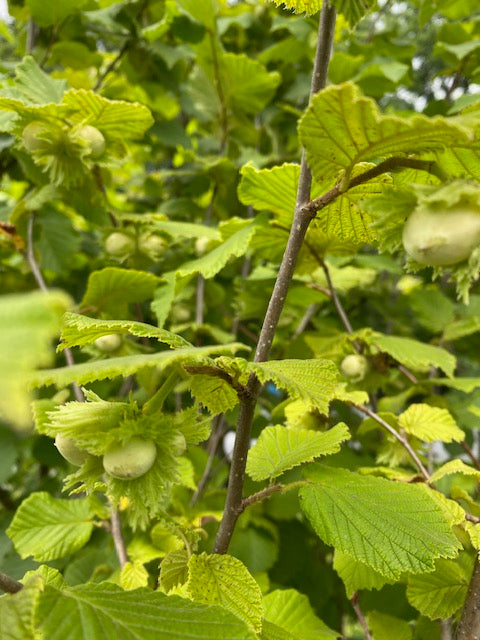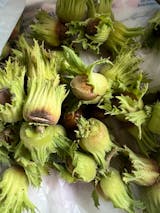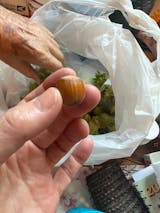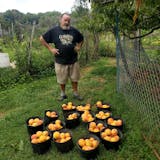
Grand Traverse Filbert
Click here for Filbert Care Guide
Corylus avellana x americana – Grand Traverse
Due to import restrictions, we are unable to ship filberts (hazelnuts) to CA, OR.
This cultivar is an upright, semi-vigorous tree with a slightly spreading growth habit. It is a 25% Turkish tree hazel hybrid, evident in its corky bark and elongated nut husk fingers. Its resistance to Eastern Filbert Blight (EFB) is believed to come from Faroka.
Nut and Kernel Characteristics:
- Kernels: Compressed and slightly pointed, very free of fiber.
- Weight: Average of 1.3 grams, with approximately 50% kernel by weight in New Jersey.
- S-alleles: 11 and 25, both expressed in the pollen.
- Bloom Time: Mid-season in New Jersey.
Compatibility and Disease Resistance:
Grand Traverse is compatible with The Beast, Sommerset, Raritan and Hunterdon. Past studies at Rutgers have shown resistance to EFB in New Jersey and with the pathogen collected across multiple locations (Molnar et al., 2010a). However, small cankers were observed on plants at Rutgers in 2018, indicating that it should be considered tolerant rather than immune.
This cultivar has also performed well in tests conducted in Lincoln, NE.
Plant Characteristics:
- Pest Resistance: Excellent
- Disease Resistance: Excellent
- Drought Tolerance: Fair
- Heat Tolerance: Excellent
- Humidity Tolerance: Excellent
- Sun Tolerance: Excellent
- Wet Soil Tolerance: Poor
- Shade Tolerance: Fair
- No Spray: Excellent
- Salt Tolerance: Fair
- Fresh for Kids: Very Good
- Deer Resistance: Fair
- Thorns: No
- Plant Type: Shrub
- Soil Type: Adaptable
- Self-Fertile: No
This information is accurate to the best of our knowledge. Comments and opinions are always welcome.



